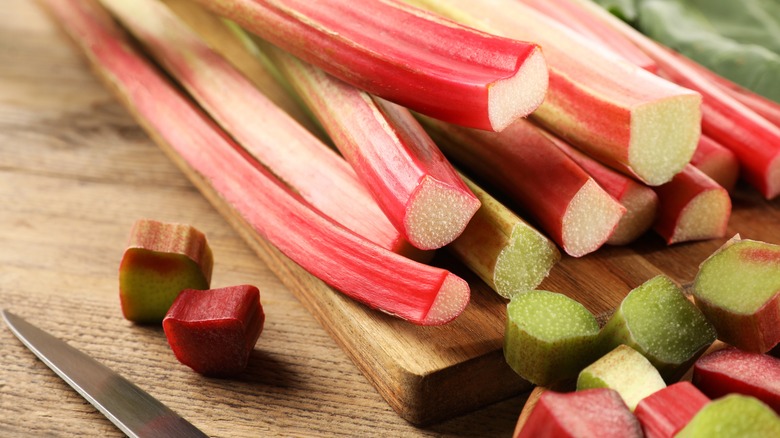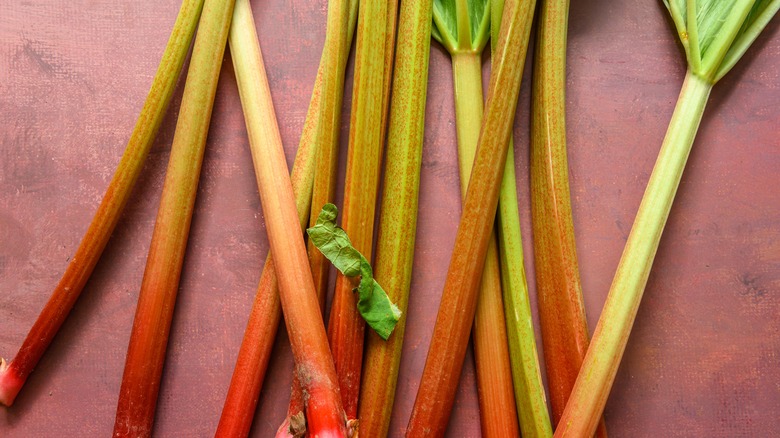Is It Safe To Eat Green Rhubarb?
Warm weather has returned, and with it, one of the best times of the year: Rhubarb season. Having grown up with rhubarb plants in the backyard, I looked forward to chopping and cooking up the plant in pastries and more, but sometimes found that our rhubarb, known for its iconic red hue, had grown, peculiarly, green. At-home growers may have wondered the same things we did: Why is rhubarb green? Does this mean the rhubarb is unripe? Or worse yet, is green-colored rhubarb unsafe to eat?
The long and short of it is that green rhubarb can be perfectly safe to eat, just like its red counterpart. Don't let the green color mislead you into thinking it's necessarily unripe, either. You should, however, take the same precautions that you take with your red rhubarb. Rhubarb leaves are the part of the plant that contains oxalic acid and anthraquinone glycosides, which can poison those who ingest them. But beyond this precaution, your primary concern will be looks, not safety, when it comes to green rhubarb.
What Makes Some Rhubarb Green?
The primary difference between red and green rhubarb is the variety of the plant. There are a handful of varieties common to the U.S., and sometimes rhubarb purchased from grocery stores and big-name nurseries will result in these multi-colored, and therefore multi-variety, sproutings. In fact, the green varieties of rhubarb tend to produce slightly better yields and, in some cases, comparable or superior (meaning less stringy) texture.
Different varieties do not, luckily, indicate a monumental, or even discernible, difference in flavor either. The key difference is actually just the color, meaning that you should be cognizant of the hue in dishes that concern aesthetics, like jams or anything open-faced. The cooked stalks of green and speckled rhubarb can skew a little pallid in color, but if this doesn't bother you, then you can take advantage of green rhubarb's tart, bright, vegetal flavor. An easy solution to this hue conundrum is to incorporate other ingredients that act as a color compensation, or you can try using green rhubarb in a recipe that already calls for other red-colored produce, like this Tasting Table recipe. Once you've settled on this issue of color, then feel free to start putting that green rhubarb to good use in all sorts of dishes.

